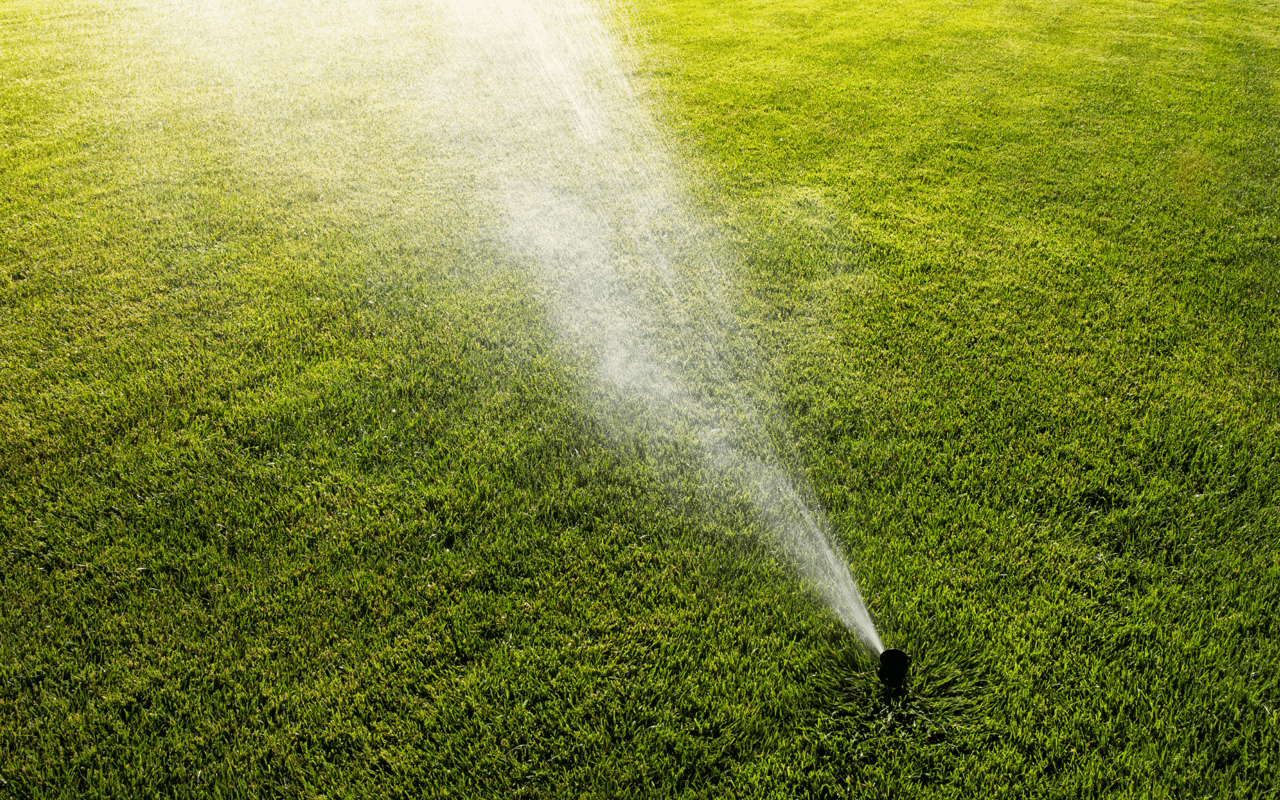How Long to Water Grass—and How Often—for a Healthy Lawn
March 7, 2025

March 7, 2025

The first step in understanding how often and how long to water grass is to choose the best type of grass for your lawn, depending on where you live. Some grasses, such as St. Augustine, will do better in drier locations, while others, like Kentucky bluegrass, need more moisture and cooler air to stay healthy. Properly caring for your grass—through aeration, using the correct mower blade height, and bringing in the best soil, among other things—also makes a difference in how well your grass grows.
Aeration is the process of creating small holes in the lawn to loosen compacted soil, allowing oxygen, water, and nutrients to reach the roots better.
Follow these tips to understand how long to water grass, plus how frequently your lawn needs a good soaking.
How do you know how often and how long to water grass? It’s time for watering when you see these three signs:
None of these signs indicate that your grass is about to die: Turf grass can turn brown and go dormant but stay alive for three to four weeks. If you live in an area with water restrictions, it’s a good idea to let your grass go dormant between waterings. When you reach three or four weeks without rain, water the grass long enough to moisten the top 5 inches of soil. This keeps grass alive, but there may not be enough water for the lawn to green up.
Always allow the soil to dry out, and wait until the blades wilt before turning on your lawn irrigation system again.
Watering daily wastes water and clogs the air spaces between soil particles that the roots need. When grass seed roots can’t breathe or grow, or grass blades are wet for longer than 14 hours, they become vulnerable to various diseases and pests.
Generally, it’s best to water your lawn deeply, but less frequently. This practice encourages turfgrass to develop deep roots that sustain it better through periods of drought.
When you do water your grass, apply about 1 inch of water.
You can determine how long it takes your water sprinkler to distribute 1 inch of water by placing several shallow containers on your lawn while running the sprinkler for 30 minutes. Measure the depth of the water in the containers. The average depth times two is the number of inches of water per hour your water sprinkler system emits; this simple calculation will tell you how long it takes your sprinkler to distribute 1 inch of water, so you know how long to run it to get that just-right amount of water.
Determining how long to water grass, how often to water, and when to water are questions you can answer only when you consider your soil, grass species, and weather.
A healthy lawn needs good soil, just like a garden. Your lawn soil should be well aerated with at least 4 to 5 percent organic matter. If your lawn struggles despite your best efforts, test your soil. (Your local Cooperative Extensive Service can assist you.) Poor or dry soil may require more frequent watering.
Improve soil by adding organic matter, such as compost from plant waste or animal manure from cows, chickens, or horses.
Cool, wet weather gives you a break from lawn irrigation tasks. If your sprinkler system is set on an automatic timer, check it frequently so you can turn it off after a stretch of rainy days.
The best time to water the lawn is generally between 4 a.m. and 8 a.m., or during your lawn’s natural dew period, to reduce the amount of water lost to evaporation. Double-check the natural dew period in your area to be sure you’re watering at the right time of day.
Grass cut at 3 inches tall retains more water than grass cut at 2 inches; keeping your grass cut to the proper height can reduce how often you need to water, and how much water your lawn needs.
During hot or dry weather, mow the grass higher to reduce stress. Longer blades encourage deeper roots to absorb more water.
Stay up to date on the latest real estate trends.

June 30, 2025
Your go-to guide for the best events, festivals, and summer fun across San Diego in 2025—from fireworks to food, concerts to Comic-Con.

June 27, 2025
You don’t need a full remodel to sell high—just a smart strategy. Here’s how San Diego sellers are maximizing price with minimal effort.

June 26, 2025
New Fannie Mae and Freddie Mac rules may allow crypto assets to count toward mortgage qualifications—here’s what it means for buyers.

June 25, 2025
Inventory is low and demand is holding—here’s why buyers in San Diego can’t afford to sit on the sidelines.

June 23, 2025
Discover why San Diego’s overlooked middle market neighborhoods are drawing attention from savvy buyers in 2025—offering value, location, and growth potential.

June 19, 2025
Maximize your sale by tapping into the power of San Diego’s sunny season—less competition, motivated buyers, and prime lifestyle appeal.
You’ve got questions and we can’t wait to answer them.